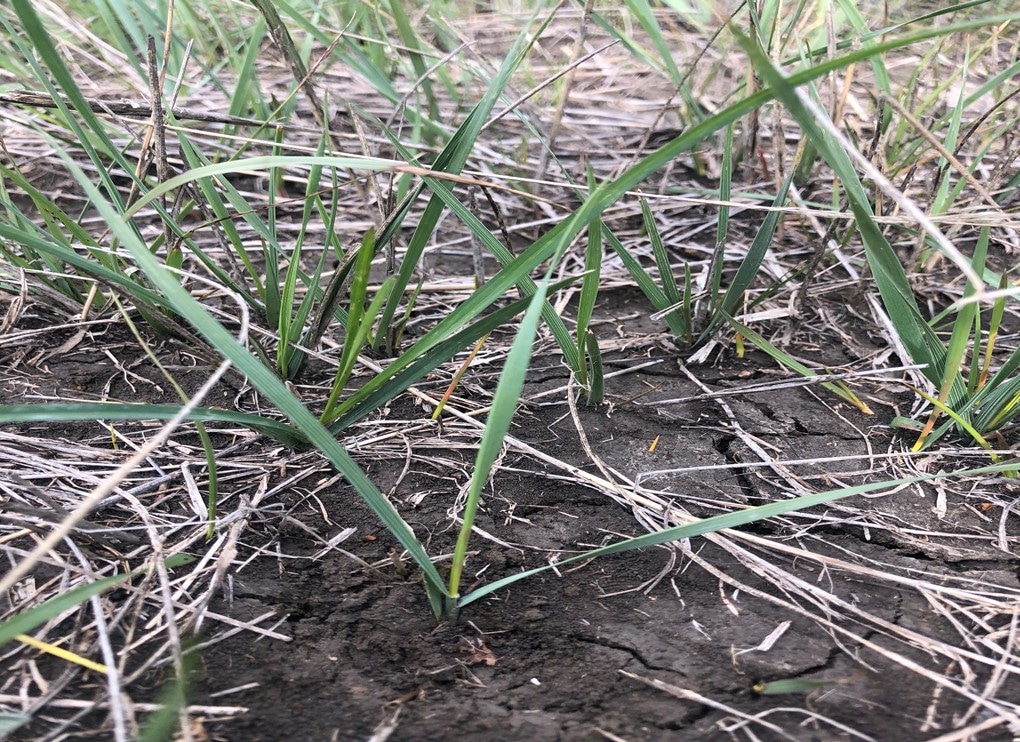In 2021, North Dakota experienced one of the worst droughts on record. This resulted in significant impacts to forage production on range, pasture land and hay land across the state.
As we look forward to 2022, the question is how the 2021 drought will impact the upcoming grazing season.
“Thanks to above average rainfall across much of the state this fall there is potential for producers to see average forage production in 2022 if we receive normal rainfall in April through June,” says Miranda Meehan, North Dakota State University (NDSU) Extension livestock environmental stewardship specialist. “Rains during this period are responsible for 80 to 90% of forage production in the state. The exception will be the western portion of the state where extreme (D3) and severe (D2) drought persists.”
The ability to achieve normal forage production in 2022 will depend on grazing management decisions made in 2021, specifically fall grazing and the level of grazing use going into the winter.
“Fall plant tiller development has a direct impact on plant growth during the subsequent year for all cool-season grasses, which are dominant in our grassland,” says Kevin Sedivec, NDSU Extension rangeland management specialist. “Cool-season grass tillers, such as western wheatgrass, Kentucky bluegrass, smooth brome grass, green needlegrass and crested wheatgrass, that developed from late August through early October are the first plants to green-up in the spring. If these tillers are eaten or die due to drought, then spring growth must occur from new tillers developed in April and May.”
Following the 2017 drought, tillers development in the spring occurs two to four weeks later than the previous year’s carry-over tillers. Tillers that develop in the spring come from buds that broke dormancy in the spring, usually when soil temperatures stay about 40 F for three or more days. However, the tillers established in the fall will grow as soon as temperatures are favorable, Sedivec notes. If livestock consumed these fall tillers below the growing point, in between the bottom two leaves, they usually will not survive the winter. Drought also will affect these fall tillers. Fall droughts either do not allow buds to come out of dormancy, thus no new tiller growth, or cause death to those tillers that did grow. If tillers did not establish or survive this fall, producers should expect to see a delay in grass development and growth this spring.
“Expect normal plant growth in the spring of 2022 if your pasture or hay land produced new tillers in late summer and early fall 2021,” says Sedivec. “This scenario assumes spring moisture in May and June 2022 is at or above normal for your area, and livestock did not graze below the growing point during the fall or winter months.”
Meehan and Sedivec advise delaying pasture turn-out on pastures or cells that experienced drought in the fall of 2021 and no green-up occurred or livestock overgrazed the pasture to the point of removal of the plant’s growing point.
“Delay turnout until the dominant forage species in a pasture reach grazing readiness,” says Meehan. “Grazing readiness for most domesticated pasture is at the three-leaf stage, whereas grazing readiness for most native range grasses is the 3.5-leaf stage. The delay in grazing readiness could be one to two weeks, or longer depending on spring temperatures and management in 2021.”
This delayed turnout is usually caused by delayed growth and development, which results in a lack of standing forage.
“When production is low due to delayed tiller development, it becomes easy to run out of forage more quickly if you go to full stock too early, leading to over-use,” says Sedivec. “This over-use during early green-up leads to reduced plant vigor and reduced leaf area, impacting photosynthesis and reducing food (carbohydrate) stored in roots. In the end, you may sacrifice 45 to 60% of forage production for the year by grazing too early.”
Although drought impacted much of the Northern Plains in 2020 and 2021, above normal fall moisture in many areas of North Dakota created the opportunity for new grass tillers to develop. These fall tillers will provide an opportunity for normal pasture turn out this coming spring and potential for a good hay producing year if rainfall is at or above normal in May and June 2022.
“If drought persisted in your area, thus no fall tillers survived or grew, or livestock over-used a pasture that contained fall tillers, expect a delay in pasture turnout in 2022,” says Meehan. “You may also experience a delay in hay harvest and even below normal hay production in 2022 if no fall tillers survived, even if spring moisture in 2022 is near normal.”
###
NDSU Extension


